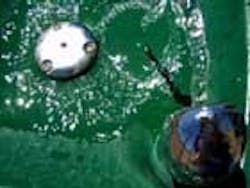EPA Finds Trace Amounts of Radiation in Drinking Water
As a result of the incident with the Fukushima nuclear plant in Japan, several U.S. Environmental Protection Agency (EPA) air monitors have detected very low levels of radioactive material in the United States consistent with estimated releases from the damaged nuclear reactors. EPA has stepped up monitoring of precipitation, milk and drinking water in response to the Fukushima events. The detections in air, precipitation and milk were expected, and the levels detected have been far below levels of public health concern.
Yesterday EPA released its latest RadNet results, which include the first results for drinking water. Drinking water samples from two locations, Boise, Idaho, and Richland, Wash., showed trace amounts of iodine-131 – about 0.2 picocuries per liter in each case. An infant would have to drink almost 7,000 liters of this water to receive a radiation dose equivalent to a day’s worth of the natural background radiation exposure people experience continuously from natural sources of radioactivity in the environment.
Earlier precipitation samples collected by EPA have shown trace amounts of radioactivity, so EPA has expected to find results such as these in some drinking water samples. Similar findings are to be expected in the coming weeks.
In addition, results of EPA’s precipitation sampling and air filter analyses continue to detect very low levels of radioactive material consistent with estimated releases from the damaged nuclear reactors. These detections were expected and the levels detected are far below levels of public-health concern.
Source: U.S. EPA
